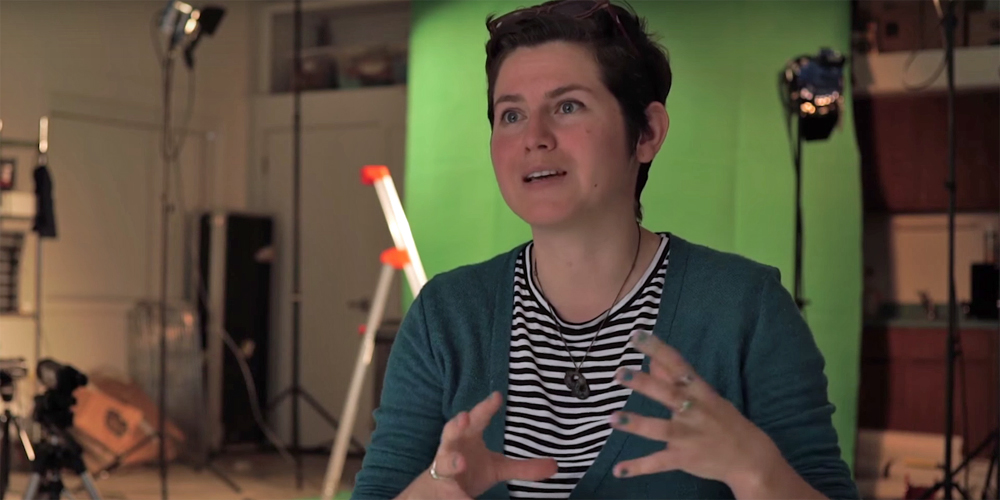Bass Connections Team Brings Cutting-edge Technology to Live Performances
As we go about our daily lives, who’s watching and why? Government institutions, for example, may be motivated to track individuals for a host of reasons, with far-reaching implications. An institution able to locate a lost Alzheimer’s patient is also able to follow dissidents.
Using live performance as way to explore these issues, a Bass Connections project team is investigating technological approaches to real-time tracking of individuals. Led by Duke faculty members Martin Brooke, Thomas F. DeFrantz and Guillermo Sapiro, the Machine Society Interfaces team is working in the SLIPPAGE: Performance | Culture | Technology Lab on state-of-the-art live multiperson tracking. The team developed a tracking algorithm with one of Professor Shapiro’s post-docs that uses one camera to track the position of a person on the stage.
The project team split into five smaller groups to build various performance elements and motion-activated devices. Tracking performers on stage can influence the overall performance (music, lights, video, objects) and enable interactive and evolutionary performances, with the added benefit of a real-time digital archive. Students presented their work during the annual ChoreoLab.
Professor Brooke has been involved with this Bass Connections collaboration since 2013-2014. “I am amazed at how different it is every year,” he says. “We get radically different things from each year’s teams. I learn a lot from the students and use it in my engineering work.”

Libi Striegl began working in SLIPPAGE as an MFA student. After she graduated, she stayed involved as a technology consultant. The lab “is designed as a composition studio workspace where the class is divided into groups,” she explains, “and those groups collaboratively make different projects that lead up to a final presentation that covers all of the technologies that they’ve learned.”
That’s one of the greatest strengths of Bass Connections—the ability to make these otherwise impossible connections.
Striegl and the team contributed to a performance piece commissioned by the Detroit Institute of Arts. “We want to have a dancer on a stage in front of a green screen, and have the footage of that dancer be imported into another projection area that allows us to manipulate the footage,” she says. “My role is doing the Isadora patches and the live video streaming; Isadora is a program that allows you to do live manipulations of video.”

Participating on this project has been a rewarding experience for Striegl. “It allows me both to teach and work with undergrads in a collaborative environment as opposed to working individually, which is what my normal practice is. I think that’s one of the greatest strengths of the Bass Connections program—the ability to make these otherwise impossible connections.”
Next month, team members will lead workshops at Moogfest 2016, an annual conference that brings together artists, inventors, creators, designers, engineers and musicians. They will present an interactive performance, Live Processing and Ghost Dancing, on Thursday, May 19 at 4:00 p.m. And this summer, a visiting Research Experiences for Undergraduates (REU) student from India and a master’s student will continue to work on the tracking algorithm and integrate it into the repertoire for Duke’s Performance and Technology course.

Learn more
- Watch the video.
- Learn more about Bass Connections in Information, Society & Culture.
- Find out how to get involved in Bass Connections.